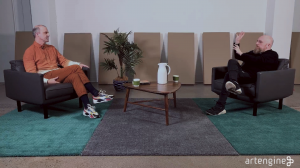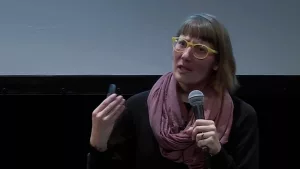Valerie Lamontagne delivered an electrifying artist talk that traversed the dynamic intersection of fashion and technology. With a whimsical twist, Lamontagne embarked on a journey through the alphabet, offering a visual compendium that encapsulated the multifaceted landscape of wearable technology.
From “Art” to “Big Data,” Lamontagne’s discourse navigated through diverse realms, highlighting the fusion of artistry, innovation, and functionality within the realm of wearable tech. Drawing upon historical references such as Oskar Schlemmer’s Triadic Ballet and contemporary pioneers like Anouk Wipprecht, Lamontagne illuminated the collaborative ethos driving this emergent field.
Emphasizing the absence of a hierarchical structure within wearables, Lamontagne underscored the inclusive nature of this epistemic culture, where disciplines like textile, fashion, and engineering converge in a symphony of creativity. Through examples spanning biofabrication, interactive garments, and health monitoring, she showcased the transformative potential of fashion tech in enhancing our daily lives.
As Lamontagne concluded her presentation, the audience was left with a profound sense of curiosity and contemplation, poised to explore the myriad possibilities that await at the nexus of fashion and technology. With her insightful commentary and engaging delivery, Lamontagne offered a captivating glimpse into the boundless realm of wearable artistry.

